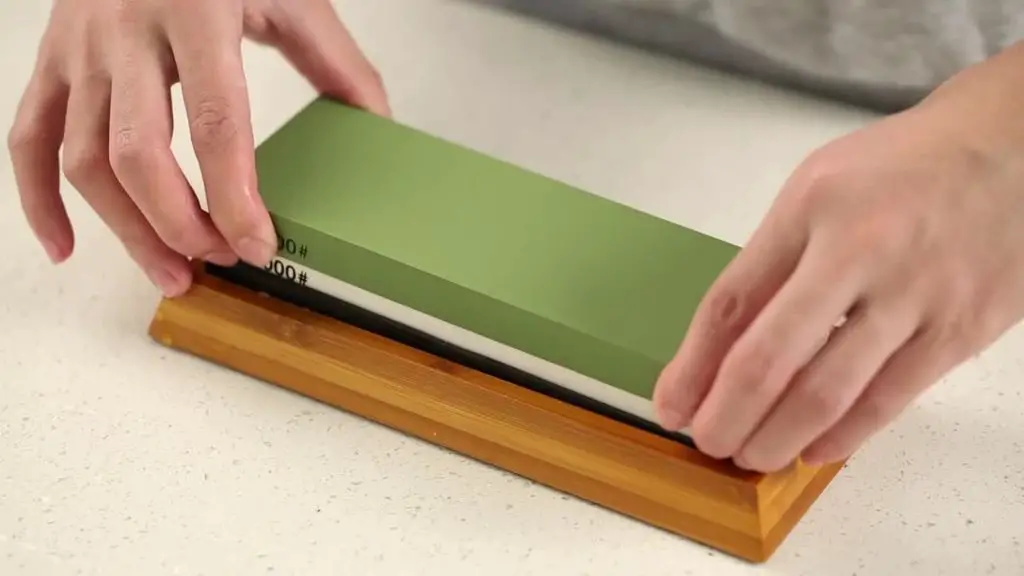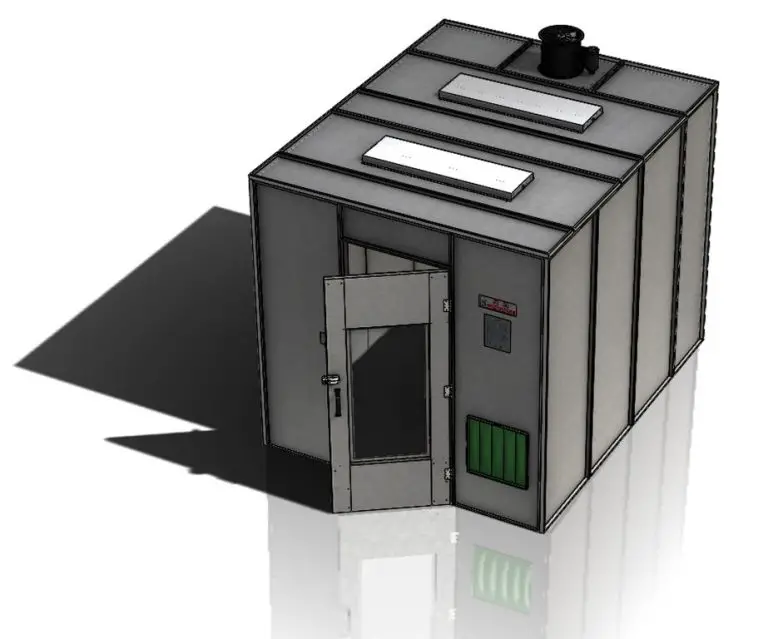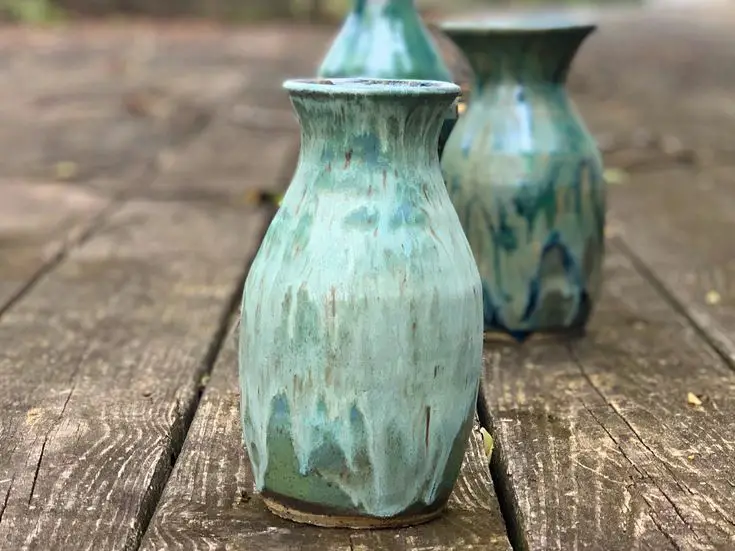What Grinder Is Best For Sharpening?
Grinders are powerful machines that use abrasive wheels or belts to shape, sharpen, and smooth materials like metal, wood, and stone. When it comes to sharpening tools, certain types of grinders stand out for their precision, control, and ability to create a fine, sharp edge.
The main types of grinders used for sharpening are bench grinders, belt grinders, angle grinders, whetstones, electric sharpeners, diamond stones, and ceramic rods. Each has advantages and disadvantages in terms of cost, speed, precision, flexibility, and finish quality. Choosing the right grinder depends on the tools you need to sharpen, how often they require sharpening, and your budget.
Bench Grinders
A bench grinder is a floor or workbench-mounted grinding machine typically powered by an electric motor (Source: https://www.familyhandyman.com/list/bench-grinder-basics/). They have coarse grinding wheels that rotate at high speeds and are designed for shaping, sharpening, and deburring metal. Bench grinders are versatile tools commonly found in home workshops, garages, metal fabrication shops and other workplaces.
Bench grinders are a popular choice for knife and tool sharpening because they allow for customizing the grind angle and shaping the cutting edge precisely (Source: https://www.youtube.com/watch?v=ndj31q2YZ78). The high-speed grinding wheels quickly remove material from the metal for fast sharpening. They can also sharpen a wide range of cutting tools from chisels and plane blades to lawnmower blades. The adjustable tool rests let you hold tools at precise angles.
However, controlling the grind angle takes practice. Beginners may find it tricky not to overheat the metal. Bench grinders are also less suitable for sharpening fragile or thin blades that need delicate honing. The coarse wheels remove significant metal and cannot produce as fine an edge as other methods. Proper eye protection is mandatory, as pieces of the grinding disc can break off at high rpm.
Belt Grinders
Belt grinders use an abrasive belt that rotates at high speed to sharpen blades. They remove material quickly and efficiently, making them a popular choice for professional knife sharpeners and workshops. Belt grinders allow for sharpening of edges at precise angles with a high level of control.
Some of the pros of using a belt grinder for sharpening include:
- Can sharpen a wide variety of blades and tools
- Allows for fast, efficient material removal and re-shaping
- Belt speed and grit can be adjusted for coarse or fine sharpening
- Angled sharpening jigs allow precise control of bevel angles
- Cooling systems help prevent overheating of the blade
Some potential downsides of belt grinders include:
- Can remove too much material if not careful
- Require more skill to avoid overgrinding or damaging blade
- Tend to leave coarser scratch patterns than other methods
- Sharpening jigs may be an additional cost
Overall, belt grinders are an excellent choice for professional sharpeners or knife enthusiasts looking to efficiently reprofile and sharpen blades. With practice, they allow superior edge geometry and bevel precision.
(Steve’s Knife Sharpening Site)
Angle Grinders
Angle grinders, also known as side or disc grinders, are handheld power tools that have a rotating abrasive disc on the end. They are commonly used for cutting, grinding and polishing metal but can also be adapted for sharpening.
Angle grinders are versatile and allow for sharpening of various blades and tools like lawn mower blades, knives, axes and chisels. They use replaceable grinding discs that come in different grits for coarse and fine sharpening. Common disc grits range from 40 to 120. Lower grit discs are used for aggressive material removal while higher grits produce a finer polished edge.
The advantages of using an angle grinder for sharpening are that they are fast and efficient at removing material. They can sharpen even very dull blades quickly. Angle grinders allow for sharpening blades and tools of all sizes. With the right disc, they can put an extremely fine polished edge on a blade.
The downsides are that freehand sharpening takes skill. It’s easy to accidentally remove too much material or overheat and damage the metal. The grinding discs wear down with use and need frequent replacing. Angle grinders are also noisy and generate sparks.
When using an angle grinder, light pressure should be used to avoid overheating the metal. The blade should be moved across the disc rather than keeping it in one place. Cooling the blade with water helps prevent discoloration and tempering. Overall, angle grinders are fast and effective sharpening tools but require care and experience.
Sources:
Whetstones
Whetstones, also known as sharpening stones, are blocks of natural or synthetic material used to manually sharpen blades. Whetstones use abrasives like silicon carbide, aluminum oxide, or ceramic particles to grind away material as the blade is rubbed against the stone’s surface with water or oil lubrication. This abrades the blade and forms a new, sharp edge (source).

Whetstones are available in different grits, with lower grits (around 1000) used for repairing damaged edges and higher grits (6000 and above) for refining the edge. Using a whetstone takes practice, but allows precise control over the sharpening process once mastered. Whetstones can produce an incredibly sharp edge on knives and tools when used properly.
Pros of whetstones include the ability to sharpen blades to a fine, polished edge. They are economical, with no electricity required. Whetstones also last a long time with proper care. Cons are that using them takes skill and patience to master. It can be messy working with water or oil lubrication. And whetstones require a flat surface to work, limiting mobility.
Electric Sharpeners
Electric sharpeners are a powerful and convenient option for sharpening pencils quickly and efficiently. They are easy to use – simply insert the pencil and the sharpener does the work for you. Electric sharpeners are available in a variety of types:
Standard electric pencil sharpeners are small desktop devices ideal for classroom or office use. They can handle a high volume of pencils and provide a sharp point (source: Amazon – Electric Pencil Sharpeners).
Heavy duty or commercial electric sharpeners are designed for frequent high-volume use. They are powerful, fast, and durable. This type of sharpener is ideal for schools, offices, art studios, and other professional settings (source: Bostitch Office – Electric Pencil Sharpeners).
Portable electric sharpeners run on batteries so they can be used anywhere. They provide the convenience of electric sharpening in a compact size. Portable sharpeners are good for on-the-go sharpening needs (source: Westcott iPoint Commercial Heavy Duty Electric Pencil Sharpener).
The main benefits of electric sharpeners are speed, consistency, and convenience. They allow you to sharpen pencils quickly with minimal effort. The sharpened point is precise and uniform each time. Electric sharpeners are easy to use and maintain. However, they do require access to electricity which limits mobility.
Diamond Sharpening Stones
Diamond sharpening stones use tiny diamond particles bonded to a metal surface to abrade and sharpen blades (Ultra Sharp Diamond Sharpening Stones). The hard diamond pieces are very effective at quickly removing steel from knives and tools to create a fresh, sharp edge. Diamond stones tend to cut aggressively and need frequent flattening, but their fast cutting action makes them a good choice for repairing damaged edges or re-profiling blades.
The main pros of diamond sharpening stones are:
- Cut very quickly and aggressively
- Effective for reprofiling or repairing damaged edges
- Long-lasting with diamond abrasive that doesn’t wear out
The main cons are:
- Can leave deeper scratches than other types of stones
- Require frequent flattening as particles break off
- More expensive than other natural sharpening stones
Overall, diamond stones are a good option for fast cutting and edge repair, but may not produce as fine a polish as other whetstones. They need to be used carefully to avoid over-grinding blades.
Ceramic Sharpening Rods
Ceramic sharpening rods are rods made from ceramic material that can be used to hone and sharpen knives. Ceramic rods are harder than steel rods, with a Mohs hardness rating around 8.5-9 compared to around 7-8 for steel (cite: Work Sharp – Ceramic Honing Rod). The extra hardness allows ceramic rods to sharpen and realign the edges on knives effectively.
Ceramic sharpening rods gently abrade away a small amount of steel to form a new edge. They are ideal for quick honing and maintenance of an already sharp blade between full sharpening sessions. Ceramic rods can help refresh the edge on dull knives but are less suitable for major sharpening jobs from very blunt edges.
The hard ceramic material is highly durable and maintains its sharpening ability over time. Ceramic rods don’t require lubrication like steel rods. They are break-resistant although can still chip if dropped. Quality ceramic rods provide a non-slip grip handle for safe and controlled sharpening.
On the downside, the hardness of ceramic can be overly aggressive on Japanese knives or other blades with hard, brittle edges. The honed edge from a ceramic rod also doesn’t last as long as other sharpening methods. For maximum sharpness and edge retention, occasional re-sharpening on stones or other systems is still required.
How to Choose
When selecting a grinder for sharpening tools, there are several key factors to consider:
- Wheel size – Larger wheels (8-10 inches) are best for sharpening larger tools like lawn mower blades. Smaller wheels (4-6 inches) are good for smaller tools like chisels.
- Wheel speed – Faster wheel speeds generate more heat which can damage tool edges. Variable speed grinders allow adjusting the speed for different tools. 800-1000 RPM is suitable for most sharpening tasks.
- Power – More powerful motors with higher horsepower provide improved grinding capacity. Look for grinders with at least 1/3 to 1/2 HP.
- Wheel grit – Coarse grit wheels cut faster while fine grit polishes. Aluminum oxide (36-60 grit) is good for rough sharpening and silicon carbide (120-180 grit) for finishing.
- Grinding wheel type – Different wheels work better for certain metals. Aluminum oxide for steel, silicon carbide for softer metals, and diamond wheels for carbide tools.
- Wheel dressing – Diamond dressing tools align and shape the wheels for proper sharpening. Dress wheels periodically to expose fresh grit.
- Safety features – Look for eye shields, spark guards, non-slip feet, and other features to use grinders safely.
- Brand reputation – Trusted brands like Wen, Grizzly, and Dewalt manufacture quality grinders suitable for sharpening.
Consider how you will use the grinder and which features are most important for those tasks when choosing a model for sharpening tools.
Conclusion
When selecting a sharpener, it’s important to consider your budget, sharpening needs, and skill level. Bench grinders offer versatility for sharpening knives, tools, and blades but require more skill. Belt grinders provide customizable sharpening for knives and blades. Angle grinders sharpen lawn mower blades and other large tools. Whetstones are affordable manual sharpeners that produce a fine edge with practice. Electric sharpeners provide fast, foolproof sharpening for knives and tools. Diamond stones sharpen quickly but can be expensive. Ceramic rods provide daily honing and touch-ups for kitchen knives.
For most home uses, a combination of a good whetstone or electric sharpener along with a ceramic honing rod will keep kitchen and pocket knives sharp. Invest in a quality bench grinder for woodworking tools, chisels, and blades. Angle grinders work for mower blades and axes. Consider your budget, sharpening needs, skill level and desired convenience when selecting the best grinder for sharpening.




